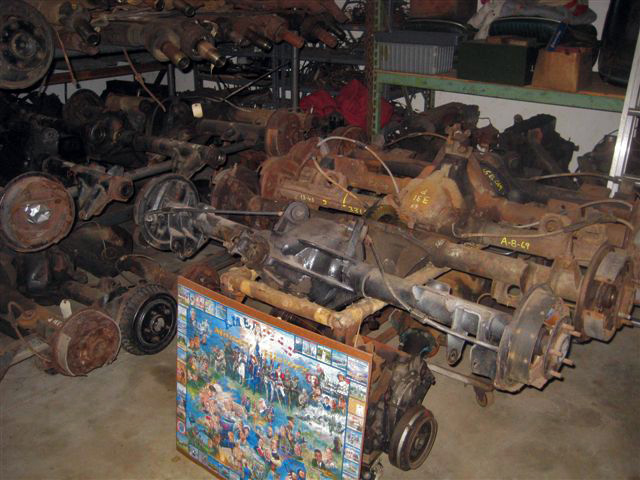When it comes to classic Chevy performance, enthusiasts often find themselves torn between the iconic Chevy 10 bolt and the ever-reliable 12 bolt rear ends. Have you ever pondered what differentiates these two seemingly similar yet functionally distinct rear ends? This may just be the challenge that could define the nature of your vintage project or even your daily driver.
Let’s delve deeper and uncover the core characteristics, benefits, and drawbacks of both the 10 bolt and 12 bolt Chevy rear ends. By the end of this exploration, you’ll be equipped to make an informed decision for your vehicle—whether it’s a muscle car restoration or a leisurely classic drive.
Understanding the Basics: What Is a Rear End?
In the automotive world, the term “rear end” refers to the assembly that houses the differential and axle components, which are pivotal for transferring power from the driveshaft to the wheels. The Chevrolet company is renowned for producing some of the most revered rear ends, particularly the 10 bolt and 12 bolt variants. Their designs are a testament to engineering prowess, balancing performance with durability.
The Chevy 10 Bolt Rear End: Characteristics and Applications
The Chevy 10 bolt rear end is often lauded for its lightweight construction and versatility. With its distinctive ten bolts securing the third member to the housing, it’s become a popular choice for a wide array of vehicles, from classic cars to modern projects. But what makes it stand out, and why might it fit your needs?
One of the hallmark features of the 10 bolt rear end is its ease of modification. Many find it ideal for street performance and mild racing applications. Given its compact nature, it fits well in smaller vehicles where space is a premium. This makes it a favored choice among restorers looking to maintain a classic feel without sacrificing too much on performance.
Moreover, if you’re looking for a balance between everyday drivability and spirited performance, the 10 bolt provides robust differential options and gear ratios that can enhance acceleration without compromising fuel economy. However, it’s important to note that this rear end is not without drawbacks. While it’s suitable for moderate horsepower levels—typically up to about 400 horsepower—those who crave high-octane thrills may find it somewhat limiting.
The Chevy 12 Bolt Rear End: A Heavyweight Contender
Now, let’s shift our focus to the Chevy 12 bolt rear end. Named after its twelve bolts securing the third member, this powerhouse has established itself as the go-to option for enthusiasts seeking robust performance capabilities. This rear end is notoriously associated with high horsepower applications, making it a staple for many muscle cars of yesteryear.
What truly sets the 12 bolt apart is its ability to handle significantly more torque and horsepower than its 10 bolt counterpart. With a reputation for robustness and reliability, it’s often selected by those looking to build out their project cars for drag racing or high-performance street driving. Many would argue that the strength of the 12 bolt lies not just in its bolts but in its entire design, which incorporates larger axle shafts and bearings that contribute to enhanced durability under stress.
Yet, choosing the 12 bolt does come with its own set of considerations. The extra weight compared to the 10 bolt could affect your car’s handling, especially in smaller, lighter vehicles. Plus, the cost can be higher, both in terms of acquisition and the potential need for additional modifications to accommodate the heft. If horsepower is on your agenda, can you justify the expense or do you see the 10 bolt suiting your needs just fine?
Comparative Analysis: Pros and Cons
When weighing the merits of the 10 bolt against the 12 bolt rear end, it’s essential to categorize their respective pros and cons. Let’s summarize for clarity:
- Chevy 10 Bolt:
- Pros: Lightweight, versatile, enhances moderate performance, better fuel economy.
- Cons: Limited to lower horsepower applications, less robust than the 12 bolt.
- Chevy 12 Bolt:
- Pros: Exceptional durability, ideal for high horsepower applications, ideal for racing performance.
- Cons: Heavier weight affects handling, typically more expensive, may require modifications.
Choosing the Right Rear End for Your Needs
So, how do you decide which rear end is right for you? It all comes down to your specific needs, driving style, and budget. Ask yourself: What do you envision for your vehicle? If your goal is to cruise with a bit of punch during weekends without sacrificing everyday usability, the 10 bolt may be a top contender. On the other hand, if your dreams involve the raw power and thrill of racing, the 12 bolt might just be the icing on your performance cake.
Ultimately, both rear ends offer distinct advantages based on their engineering strengths. Whether you prioritize lightweight performance or robust durability, the right rear end can significantly enhance your Chevy experience. Just remember, whatever you choose, don’t underestimate the importance of correct installation and proper setup—they are crucial to any successful car build.
In conclusion, both the Chevy 10 bolt and 12 bolt rear ends have their dedicated fan bases. Understanding their individual characteristics can make the difference in a project car, ensuring you achieve the performance you desire. May your decision be informed, your ride be thrilling, and your car be every bit the classic you dream of!
